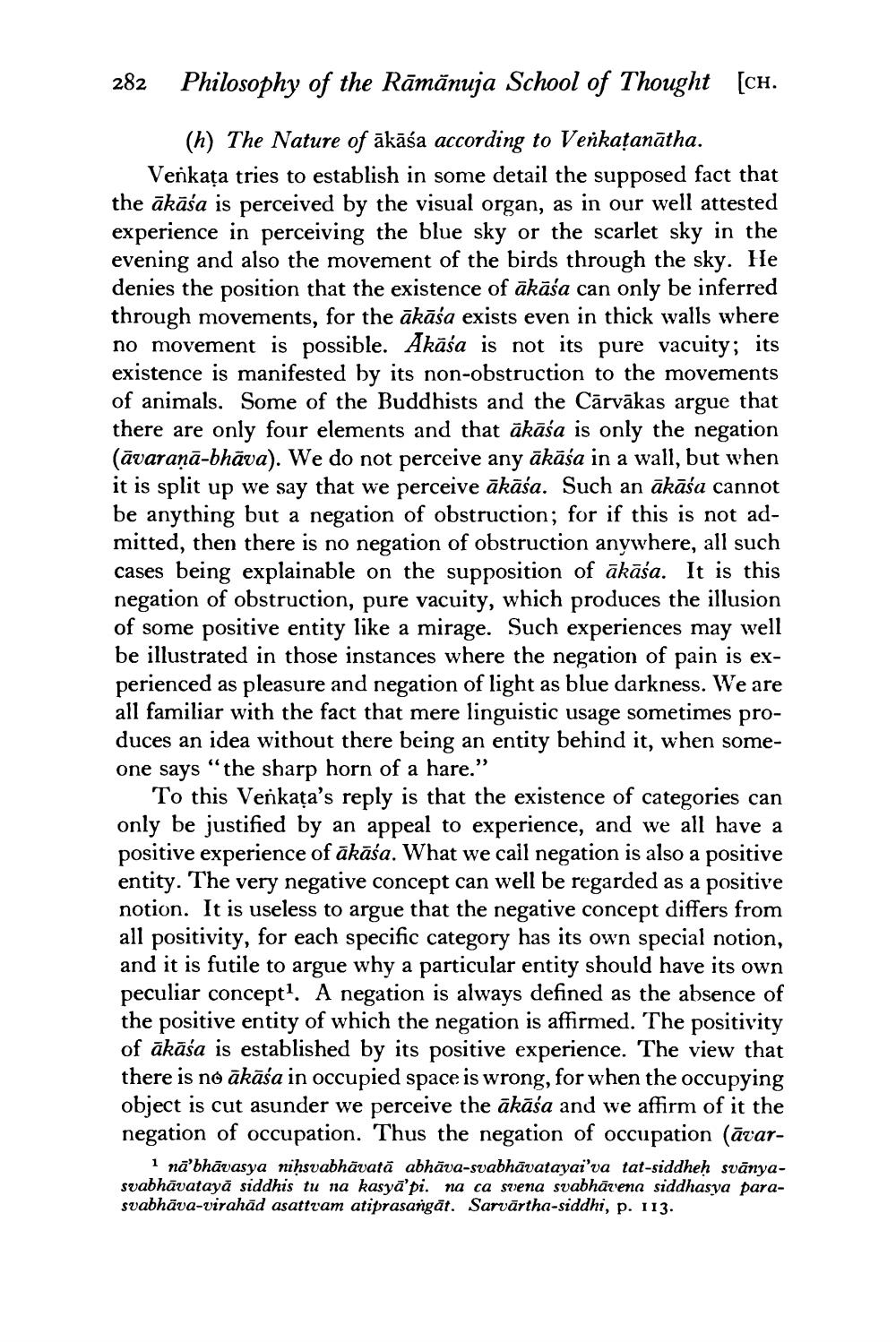________________
Philosophy of the Rāmānuja School of Thought [CH.
(h) The Nature of ākāśa according to Venkaṭanātha. Venkata tries to establish in some detail the supposed fact that the ākāśa is perceived by the visual organ, as in our well attested experience in perceiving the blue sky or the scarlet sky in the evening and also the movement of the birds through the sky. He denies the position that the existence of ākāśa can only be inferred through movements, for the ākāśa exists even in thick walls where no movement is possible. Akāśa is not its pure vacuity; its existence is manifested by its non-obstruction to the movements of animals. Some of the Buddhists and the Carvākas argue that there are only four elements and that ākāśa is only the negation (āvaraṇā-bhāva). We do not perceive any ākāśa in a wall, but when it is split up we say that we perceive ākāśa. Such an ākāśa cannot be anything but a negation of obstruction; for if this is not admitted, then there is no negation of obstruction anywhere, all such cases being explainable on the supposition of ākāśa. It is this negation of obstruction, pure vacuity, which produces the illusion of some positive entity like a mirage. Such experiences may well be illustrated in those instances where the negation of pain is experienced as pleasure and negation of light as blue darkness. We are all familiar with the fact that mere linguistic usage sometimes produces an idea without there being an entity behind it, when someone says "the sharp horn of a hare.'
""
282
To this Venkata's reply is that the existence of categories can only be justified by an appeal to experience, and we all have a positive experience of ākāśa. What we call negation is also a positive entity. The very negative concept can well be regarded as a positive notion. It is useless to argue that the negative concept differs from all positivity, for each specific category has its own special notion, and it is futile to argue why a particular entity should have its own peculiar concept1. A negation is always defined as the absence of the positive entity of which the negation is affirmed. The positivity of ākāśa is established by its positive experience. The view that there is no ākāśa in occupied space is wrong, for when the occupying object is cut asunder we perceive the ākāśa and we affirm of it the negation of occupation. Thus the negation of occupation (āvar
1 na'bhāvasya niḥsvabhāvatā abhāva-svabhāvatayai'va tat-siddheḥ svānyasvabhāvataya siddhis tu na kasya'pi. na ca svena svabhāvena siddhasya parasvabhäva-virahad asattvam atiprasangat. Sarvartha-siddhi, p. 113.




